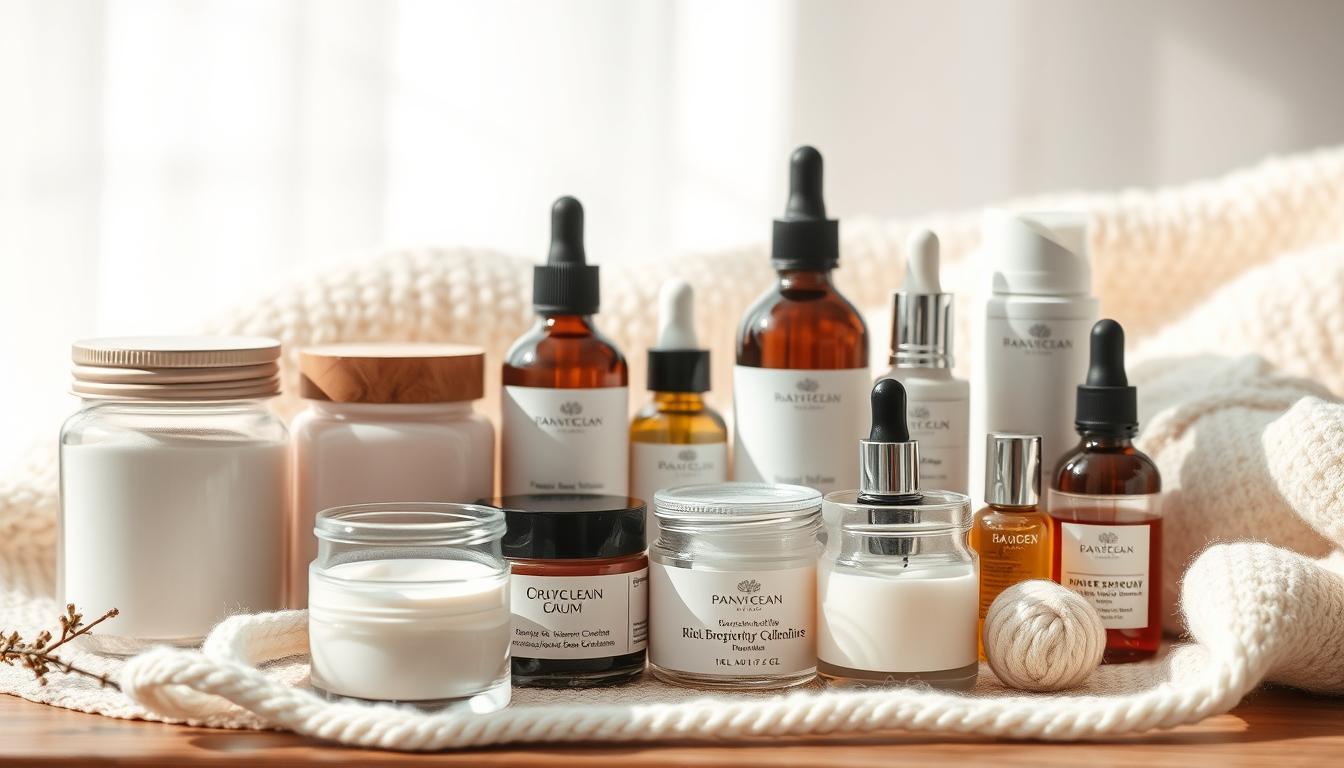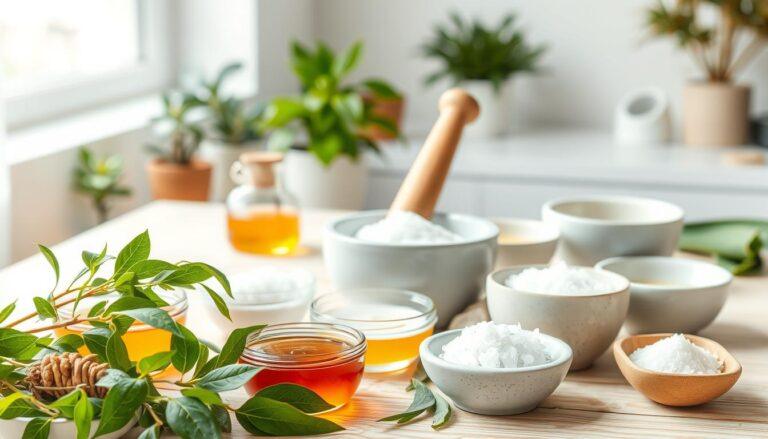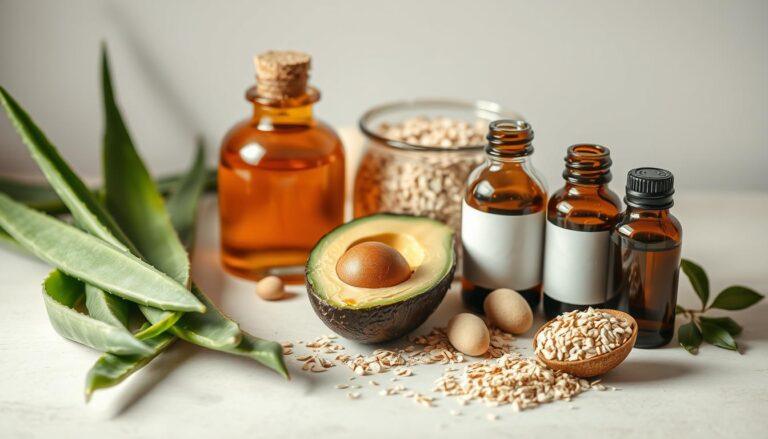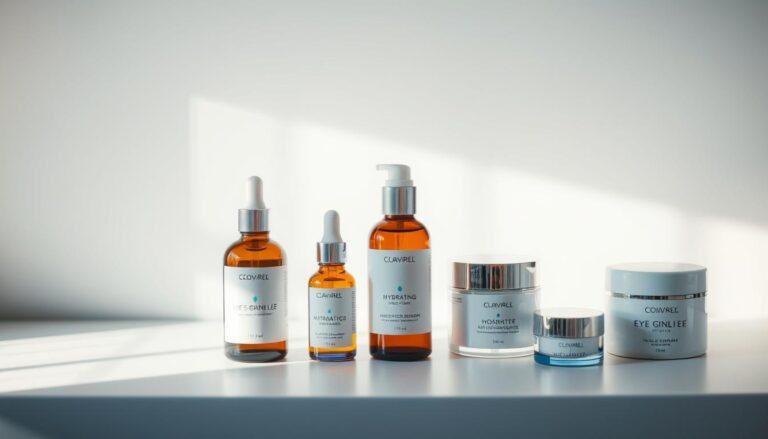Winter Skincare Guide: Combating Dryness and Irritation
Every year, as the temperature drops, I face the same struggle: dry, itchy skin. The cold air outside and the dry heat indoors seem to team up against my complexion, leaving it feeling tight and uncomfortable. It’s not just about the weather—it’s about how my skin reacts to these changes.
I’ve learned that simply slathering on heavy creams isn’t enough. My skin needs more than just a quick fix—it needs a complete routine overhaul. Hydration and moisture are key, but it’s also about choosing the right products and techniques to soothe and protect.
In this guide, I’ll share my personal journey and the steps I’ve taken to keep my skin comfortable during the colder months. From nourishing serums to simple lifestyle tweaks, these tips have made a world of difference for me—and they can for you too.
Key Takeaways
- Cold air and indoor heating can strip your skin of its natural moisture.
- Heavy creams alone may not solve dryness—hydration is essential.
- Adjusting your routine can help soothe and protect your skin.
- Serums with hydrating ingredients can boost skin moisture levels.
- Small lifestyle changes, like using a humidifier, can make a big difference.
Understanding Winter Skin Challenges
When the air turns crisp, my skin struggles to stay hydrated. The combination of cold winds outside and dry heat indoors creates a perfect storm for dry skin. I’ve learned that understanding the root causes of these issues is the first step toward finding solutions.
What Causes Dryness and Irritation in Winter
Low humidity is one of the biggest culprits. The air lacks moisture, which means my skin loses its natural hydration faster. Indoor heating systems make things worse by sucking even more water from the air—and my skin. I’ve noticed that even my favorite cream sometimes isn’t enough during these months.
Hot showers, though comforting, can strip away essential oils. This leaves my skin feeling tight and itchy. I’ve had to adjust my routine to avoid over-drying. Switching to lukewarm water and shorter showers has made a noticeable difference.
Recognizing the Impact of Cold Weather on My Skin
My skin behaves differently in the colder months. It feels more sensitive and prone to irritation. I’ve realized that my summer products don’t always work in winter. For example, lighter lotions don’t provide enough moisture, so I’ve switched to richer creams and hydrating serums.
Here’s a quick comparison of how my skin changes from summer to winter:
| Season | Skin Behavior | Product Adjustments |
|---|---|---|
| Summer | Oily, prone to breakouts | Lightweight lotions, gel-based cleansers |
| Winter | Dry, sensitive, flaky | Rich creams, hydrating serums, gentle cleansers |
Understanding these changes has helped me tailor my routine to keep my skin healthy and comfortable all year round.
Essentials of a Winter Skincare Routine
The shift in seasons calls for a thoughtful update to my daily routine. I’ve learned that small, intentional changes can make a big difference in keeping my skin healthy and hydrated. It’s not just about adding more products—it’s about choosing the right ones and using them at the right time.

Switching Up My Daily Products
One of the first changes I made was swapping out my gel-based cleanser for a cream-based formula. Harsh cleansers can strip away natural oils, leaving my skin feeling tight and dry. A gentle, hydrating cleanser has been a game-changer, especially for my sensitive skin.
I’ve also incorporated acids like AHA and BHA into my routine. These ingredients help exfoliate without over-drying, promoting smoother, more hydrated skin. Using them a few times a week has made a noticeable difference in my skin’s texture and moisture levels.
Adapting for Sensitive and Dry Skin Types
Every day is an opportunity to support my skin with a tailored approach. For me, that means focusing on hydration and protection. I’ve started applying a hydrating serum with hyaluronic acid right after cleansing to lock in moisture.
Consistency is key. I’ve made these changes part of my routine throughout the year, not just during colder months. This helps maintain a healthy skin barrier and prevents dryness from creeping back in.
Here’s a quick look at my updated routine:
- Morning: Gentle cleanser, hydrating serum, and a rich moisturizer.
- Evening: Cream-based cleanser, AHA/BHA treatment, and overnight mask.
These adjustments have helped me keep my skin comfortable and hydrated, no matter the season.
My Winter Skincare Guide: Personalized Routine Adjustments
Personalizing my routine has been the key to tackling seasonal dryness. I’ve learned that my skin’s needs are unique, and a one-size-fits-all approach doesn’t work. By listening to my skin’s signals, I’ve crafted a routine that keeps my face hydrated and healthy.
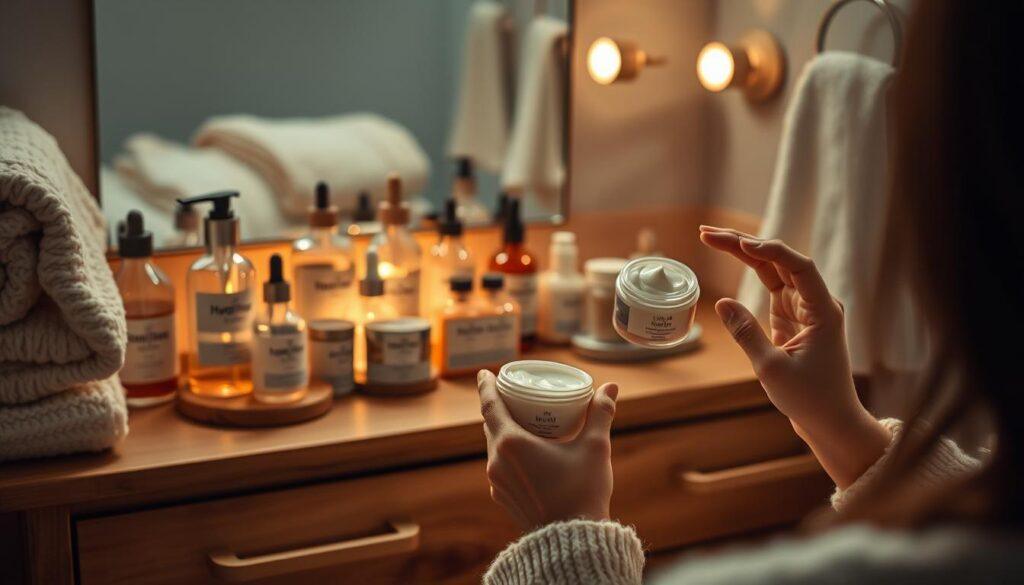
Customizing Solutions for My Skin Needs
I’ve noticed that my skin barrier becomes more vulnerable during colder months. To combat this, I’ve incorporated targeted serums and barrier-repair treatments. These products work at a cellular level to strengthen my skin’s natural defenses.
Understanding how skin cells function has helped me choose the right ingredients. For example, hyaluronic acid locks in moisture, while ceramides repair the skin barrier. This combination has made a noticeable difference in my hydration levels.
Here’s how I’ve adjusted my routine:
- I use a hydrating serum with hyaluronic acid every morning to lock in moisture.
- At night, I apply a barrier-repair cream to restore my skin barrier while I sleep.
- I mix over-the-counter products with high-performance formulas for a balanced approach.
This personalized method ensures my face stays nourished and protected, even in challenging conditions.
| Product Type | Key Ingredient | Benefit |
|---|---|---|
| Hydrating Serum | Hyaluronic Acid | Locks in moisture at a cellular level |
| Barrier Cream | Ceramides | Repairs and strengthens the skin barrier |
| Gentle Cleanser | Glycerin | Cleans without stripping natural oils |
By tailoring my skincare routine to my specific needs, I’ve been able to address dryness and irritation effectively. It’s all about understanding what works best for my face and staying consistent.
Gentle Cleansing for Moisture Retention
Keeping my skin hydrated starts with the basics—gentle cleansing. It’s the foundation of my routine, ensuring my barrier stays intact while removing impurities. Over time, I’ve learned that harsh cleansers can strip away natural oils, leaving my skin dry and irritated. That’s why I’ve switched to gentler options that respect my skin’s needs.

Choosing the Right Cleanser
Finding the right product has been a game-changer for me. I avoid foaming cleansers, as they can be too drying. Instead, I opt for cream-based formulas or micellar water. These options cleanse effectively without compromising my barrier. Ingredients like glycerin and ceramides are my go-to because they lock in moisture and soothe my skin.
Ideal Water Temperature and Technique
Hot water might feel relaxing, but it’s a no-go for my body and face. I’ve switched to lukewarm water to prevent stripping away essential oils. I also keep my showers short—no more than 10 minutes. This simple change has helped me retain moisture and keep my skin feeling soft.
Here’s how I’ve adjusted my cleansing routine:
- I use a gentle cleanser morning and night to maintain my skin’s balance.
- Lukewarm water is my standard—it’s effective without being harsh.
- I pat my skin dry with a soft towel instead of rubbing, which reduces irritation.
For more tips on maintaining a healthy routine, check out this acne-prone skin care routine. Gentle cleansing is the first step toward keeping your skin calm and hydrated, no matter the season.
Hydration and Moisturizing Essentials for Winter
As the season changes, my focus shifts to keeping my skin hydrated and protected. The combination of cold air and indoor heating can strip away moisture, leaving my skin feeling tight and uncomfortable. I’ve learned that a well-rounded routine is essential to combat these challenges.
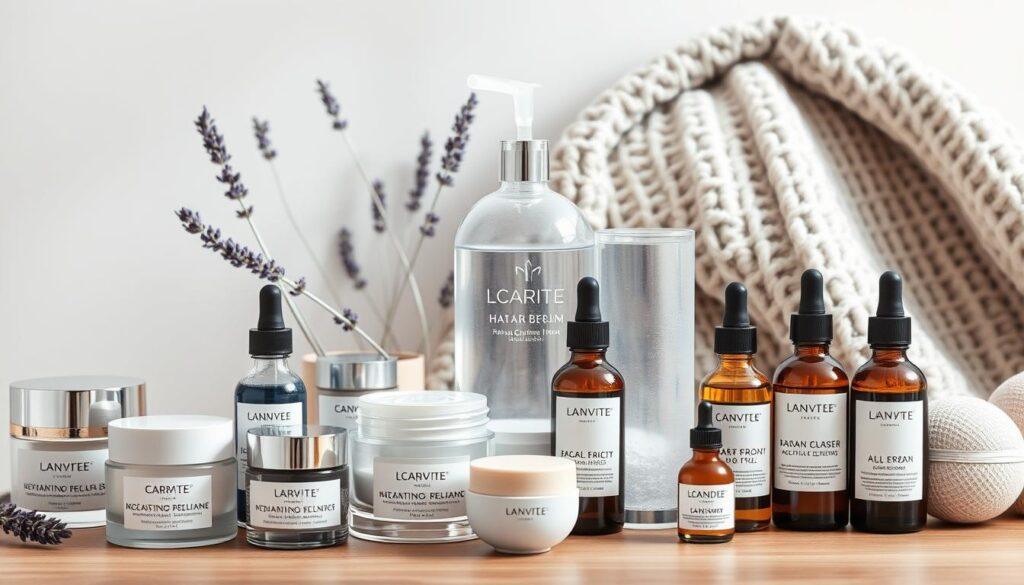
Products That Lock in Moisture
Finding the right products has been a game-changer for me. Rich creams with ingredients like ceramides and hyaluronic acid create a protective barrier against the harsh air. These formulas lock in moisture and keep my skin plump throughout the season.
I also rely on advanced serums to target hydration at a cellular level. By understanding how skin cells react to the cold, I’ve been able to choose products that address dryness effectively. My must-haves include a hydrating serum and a nourishing overnight mask.
Tips for Daily Hydration Boosts
Small changes in my routine have made a big difference. I adjust my moisturizer based on the temperature and humidity levels. On colder days, I layer a thicker cream over my serum for extra protection.
Exfoliating gently once a week helps remove dead skin and allows my products to penetrate better. I also drink plenty of water and use a humidifier to combat the dry air indoors. These daily boosts keep my skin healthy and hydrated, no matter the season.
Exfoliation Practices for Renewed Skin
Exfoliation has become a game-changer in my routine, especially when the air gets drier. It’s not just about scrubbing away dead skin—it’s about creating a fresh canvas for my hydrating products to work their magic. Over time, I’ve learned that gentle exfoliation is key to maintaining my skin’s clarity and texture.

When and How to Exfoliate Gently
Timing is everything when it comes to exfoliation. I schedule it on days when I have extra time to pamper my skin, usually in the evening. This allows my skin to recover overnight and ensures I’m not rushing through the process. I’ve found that exfoliating two to three times a week works best for my skin type.
I prefer using a lightweight exfoliant that’s both hydrating and effective. Products with glycolic acid or lactic acid are my go-to because they gently remove impurities without irritating my sensitive skin. As one expert puts it,
“Chemical exfoliants like AHAs are ideal for promoting cell turnover while maintaining moisture.”
Here’s how I approach exfoliation:
- I cleanse my skin thoroughly before applying the exfoliant.
- I use gentle, circular motions to avoid over-scrubbing.
- I follow up with a hydrating serum and moisturizer to lock in moisture.
Even a small change in my exfoliation routine has led to noticeably renewed skin. By letting my skin “breathe” and removing dead cells, I’ve seen a significant improvement in texture and tone. It’s a simple yet powerful step in my journey to healthier skin.
Sun Protection and Blue Light Defense
Protecting my skin from environmental stressors has become a non-negotiable part of my daily routine. Even on cloudy or cold days, I’ve learned that UV rays and blue light can still harm my complexion. That’s why I never skip sunscreen and always incorporate antioxidant-rich formulas into my regimen.

Importance of SPF Even in Cold Weather
Many people think sunscreen is only for sunny days, but that’s a myth. UVA rays, which cause long-term damage, can penetrate clouds and even windows. I use a broad-spectrum SPF year round to protect skin from premature aging and dark spots.
My go-to sunscreen is lightweight and non-greasy, perfect for my sensitive skin type. It’s packed with hyaluronic acid, which keeps my skin hydrated while shielding it from harmful rays. As one expert notes,
“Daily SPF use is the simplest way to prevent photoaging and maintain a healthy complexion.”
Shielding My Skin from Blue Light Exposure
Blue light from screens is another hidden threat. Studies show it can penetrate deeper than UV rays, causing inflammation and oxidative stress. To combat this, I’ve added antioxidant serums to my routine. These formulas neutralize free radicals and protect skin from damage.
I also limit screen time and use “Night Mode” on my devices. My favorite serum contains hyaluronic acid and vitamin C, which work together to hydrate and defend my sensitive skin type. Here’s how I integrate these steps into my day:
- Apply SPF every morning, even indoors.
- Use an antioxidant serum before screen-heavy tasks.
- Take breaks from devices to reduce blue light exposure.
By prioritizing both SPF and blue light defense, I’ve noticed a significant improvement in my skin’s health and appearance. It’s a small effort that makes a big difference year round.
Smart Body Skincare Strategies for Cold Weather
The colder months bring unique challenges to my body’s skin, especially in areas prone to dryness. Harsh weather conditions, combined with low indoor humidity, can leave my skin feeling tight and flaky. To combat this, I’ve developed a routine that focuses on hydration and protection.
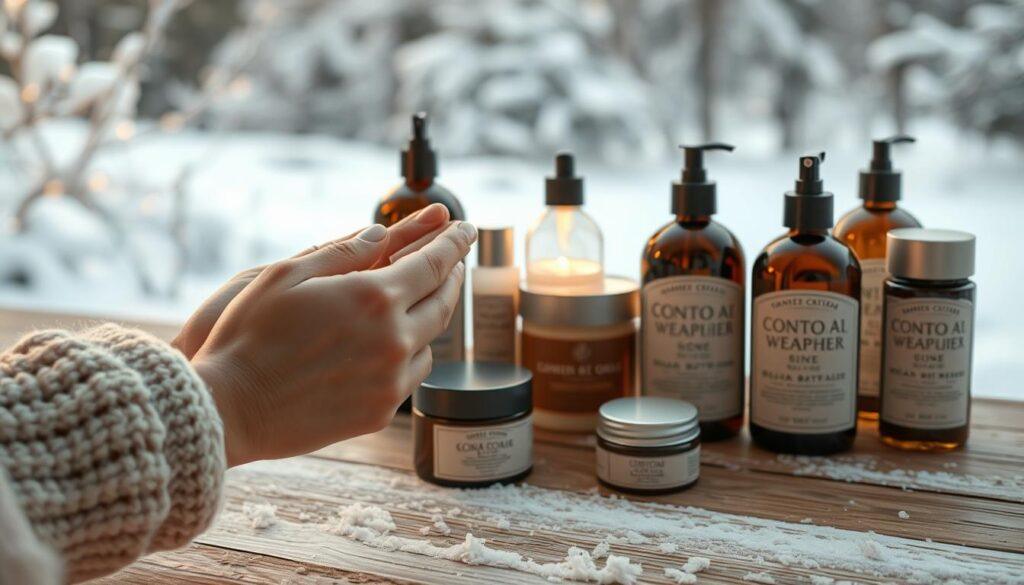
Caring for Dry and Flaky Body Areas
Regular, gentle exfoliation has become a cornerstone of my body care routine. It helps remove dead skin cells and preps my skin to absorb moisture more effectively. I use a mild scrub or a chemical exfoliant twice a week to avoid irritation while keeping my skin smooth.
Hydration is key, and I rely on products rich in hyaluronic acid to replenish moisture. These formulas penetrate deeply, locking in hydration and preventing dryness. I apply a thick, nourishing moisturizer immediately after showering to seal in the benefits.
Here’s how I adjust my routine based on weather and humidity levels:
- On colder days, I layer a hydrating serum under my moisturizer for extra protection.
- I use a humidifier indoors to combat dry air and maintain optimal humidity levels.
- For problem areas like elbows and knees, I apply a richer cream to prevent flakiness.
By tailoring my routine to these specific needs, I’ve noticed a dramatic improvement in my skin’s texture and comfort. Here’s a quick breakdown of my go-to products:
| Product | Key Ingredient | Benefit |
|---|---|---|
| Gentle Exfoliant | Lactic Acid | Removes dead skin without irritation |
| Hydrating Body Lotion | Hyaluronic Acid | Locks in moisture for long-lasting hydration |
| Rich Cream | Shea Butter | Repairs and protects dry, flaky areas |
These strategies have helped me maintain healthy, hydrated skin even during the coldest months. It’s all about understanding my skin’s needs and adapting my routine accordingly.
Elevating Indoor Air Quality to Support Skin Health
Indoor air quality plays a surprising role in maintaining healthy skin, especially during colder months. I’ve learned that the dry air created by forced heating systems can strip moisture from my skin, leaving it tight and uncomfortable. To combat this, I’ve turned to technology—specifically, a humidifier—to create a more skin-friendly environment at home.

Using a Humidifier for Consistent Moisture
Adding a humidifier to my daily routine has been a game-changer. Forced air heating can reduce indoor humidity levels to as low as 10-20%, which is far from ideal for skin health. By running a humidifier, I’ve been able to maintain a balanced moisture level in the air, which directly benefits my skin.
I’ve noticed that my skin feels softer and more hydrated, even on the coldest days. The humidifier also helps reduce the appearance of dead skin cells, as it prevents my skin from becoming overly dry and flaky. Plus, it’s not just my skin that benefits—my plants thrive in the more humid environment too!
Here’s how I incorporate a humidifier into my skincare routine:
- I run the humidifier daily, especially during the night, to prevent overnight dryness.
- I place it in my bedroom to create a moisture-rich environment while I sleep.
- I adjust the humidity level to stay between 40-60%, which is optimal for skin health.
This simple addition has become an essential part of my winter skincare approach. It’s a small change that makes a big difference in keeping my skin comfortable and hydrated.
| Benefit | How It Helps |
|---|---|
| Hydration | Maintains moisture levels in the air, preventing skin dryness. |
| Skin Barrier | Reduces the appearance of dead skin cells and flakiness. |
| Comfort | Keeps skin soft and supple, even in harsh conditions. |
By focusing on indoor air quality, I’ve been able to support my skincare routine and keep my skin healthy all season long. It’s a reminder that sometimes, the simplest solutions are the most effective.
Active Ingredients and Treatments to Strengthen My Skin Barrier
Strengthening my skin barrier has become a priority in my routine, especially during colder months. I’ve learned that the right ingredients can make a significant difference in repairing and protecting my skin. By focusing on targeted treatments, I’ve been able to combat dryness and irritation effectively.
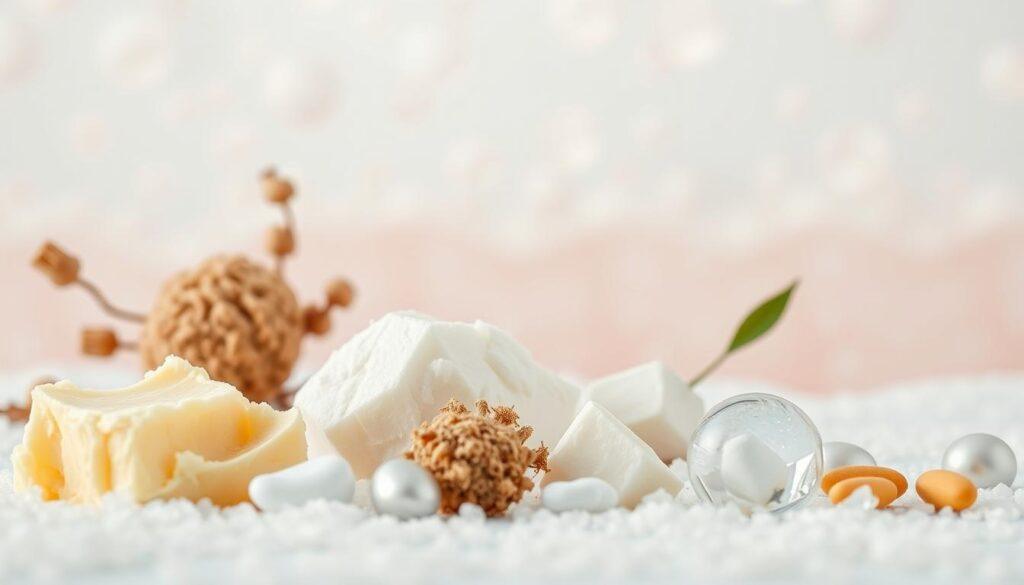
Benefits of Hyaluronic Acid and Peptides
Hyaluronic acid has been a game-changer for my skin’s hydration. This powerful ingredient locks in moisture, keeping my skin plump and supple even in harsh conditions. I’ve noticed a visible improvement in my skin’s texture and resilience since incorporating it into my routine.
Peptides, on the other hand, have helped repair my skin barrier. These amino acids stimulate collagen production, which strengthens my skin’s natural defenses. As one expert explains,
“Peptides act as messengers, signaling your skin to produce essential proteins like collagen and elastin.”
Together, theseingredients have transformed my skin’s health.
Choosing Targeted Serums and Creams
Finding the right formula has been key to my success. I look for serums and creams that combine hyaluronic acid, peptides, and ceramides. These ingredients work together to repair and hydrate my skin, creating a protective barrier against environmental stressors.
For example, I use a hydrating serum every morning to lock in moisture. At night, I apply a barrier-repair cream to restore my skin while I sleep. This balanced approach ensures my skin stays healthy and hydrated throughout the winter months.
Here’s how I integrate these treatments into my routine:
- Morning: Hydrating serum with hyaluronic acid followed by a lightweight moisturizer.
- Evening: Barrier-repair cream with peptides and ceramides for overnight recovery.
- Weekly: A gentle exfoliant to remove dead skin cells and enhance product absorption.
By focusing on these active ingredients, I’ve been able to strengthen my skin barrier and improve its overall health. For more tips on enhancing your routine, check out this guide to niacinamide serums.
Conclusion
Navigating the challenges of colder months has taught me the importance of a tailored approach to skin care. From gentle cleansing to targeted treatments, each step in my routine plays a vital role in keeping my skin hydrated and protected. I’ve learned that small changes, like using lukewarm water and layering hydrating creams, can make a big difference.
One of my key takeaways is the value of active ingredients like hyaluronic acid and ceramides. These help repair my skin barrier and lock in moisture, even in harsh conditions. I also never skip SPF, as UV rays can still harm my face on overcast days.
I encourage you to experiment with these tips and adapt them to your unique needs. For more insights, check out this hyperpigmentation treatment guide. Share your own experiences—I’d love to hear what works for you!

